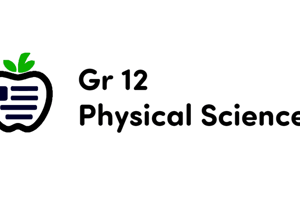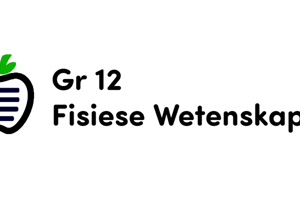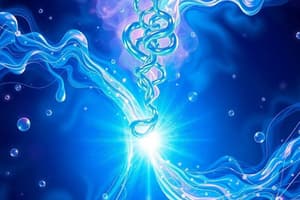Podcast
Questions and Answers
Which process is considered reversible?
Which process is considered reversible?
- Formation of NH3 (correct)
- Precipitation reactions
- Evolution of gases
- Decomposition of KClO3
Which type of equilibrium involves constant concentrations of solutes in a solution?
Which type of equilibrium involves constant concentrations of solutes in a solution?
- Ionic equilibrium (correct)
- Thermal equilibrium
- Chemical equilibrium
- Physical equilibrium
What characterizes an irreversible process?
What characterizes an irreversible process?
- The reaction goes to completion (correct)
- Occurs at a precise temperature only
- Reactions are always endothermic
- Products can transform back into reactants
In what scenario does physical equilibrium occur?
In what scenario does physical equilibrium occur?
Which of the following does NOT represent a characteristic of chemical equilibrium?
Which of the following does NOT represent a characteristic of chemical equilibrium?
What remains constant in a physical equilibrium involving a solid and liquid?
What remains constant in a physical equilibrium involving a solid and liquid?
Which example describes gas equilibrium accurately?
Which example describes gas equilibrium accurately?
What process is characterized as going to completion?
What process is characterized as going to completion?
Flashcards are hidden until you start studying
Study Notes
Reversible and Irreversible Processes
-
Reversible Processes: Reactions where products can convert back into reactants under the same conditions, e.g., formation of NH₃, HI, SO₂.
-
These processes do not proceed to completion, allowing for the possibility of reverse reactions.
-
Irreversible Processes: Reactions where products do not revert to reactants, e.g., 2KClO₃ → 2KCl + 3O₂.
-
These processes typically go to completion, often seen in precipitation and gas evolution reactions.
Types of Equilibria
- Physical Equilibrium: Involves the phase changes between states of matter without altering the chemical composition, e.g., H₂O(s) ⇌ H₂O(l).
- Chemical Equilibrium: Involves a balance between forward and reverse reactions of chemical species, e.g., PCl₅(g) ⇌ PCl₃(g) + Cl₂(g).
- Ionic Equilibrium: Describes the equilibrium established between a weak acid/base and its ions in solution, e.g., CH₃COOH(aq) ⇌ CH₃COO⁻(aq) + H⁺(aq).
Physical Equilibrium Characteristics
- Solid to Liquid: When a solid melts to form a liquid, the melting point remains constant under a specific pressure, e.g., H₂O(s) ⇌ H₂O(l).
- Liquid to Vapor: At a specific temperature, the vapor pressure is established as liquid turns to gas, e.g., H₂O(l) ⇌ H₂O(g).
- Solute to Solution: The concentration of a solid solute dissolved in a solvent becomes constant at a given temperature, e.g., Sugar(s) ⇌ Sugar(solution).
- Gas to Aqueous: The concentration of a gas in an aqueous solution stabilizes at a constant value at a given temperature, e.g., CO₂(g) ⇌ CO₂(aq).
Studying That Suits You
Use AI to generate personalized quizzes and flashcards to suit your learning preferences.




